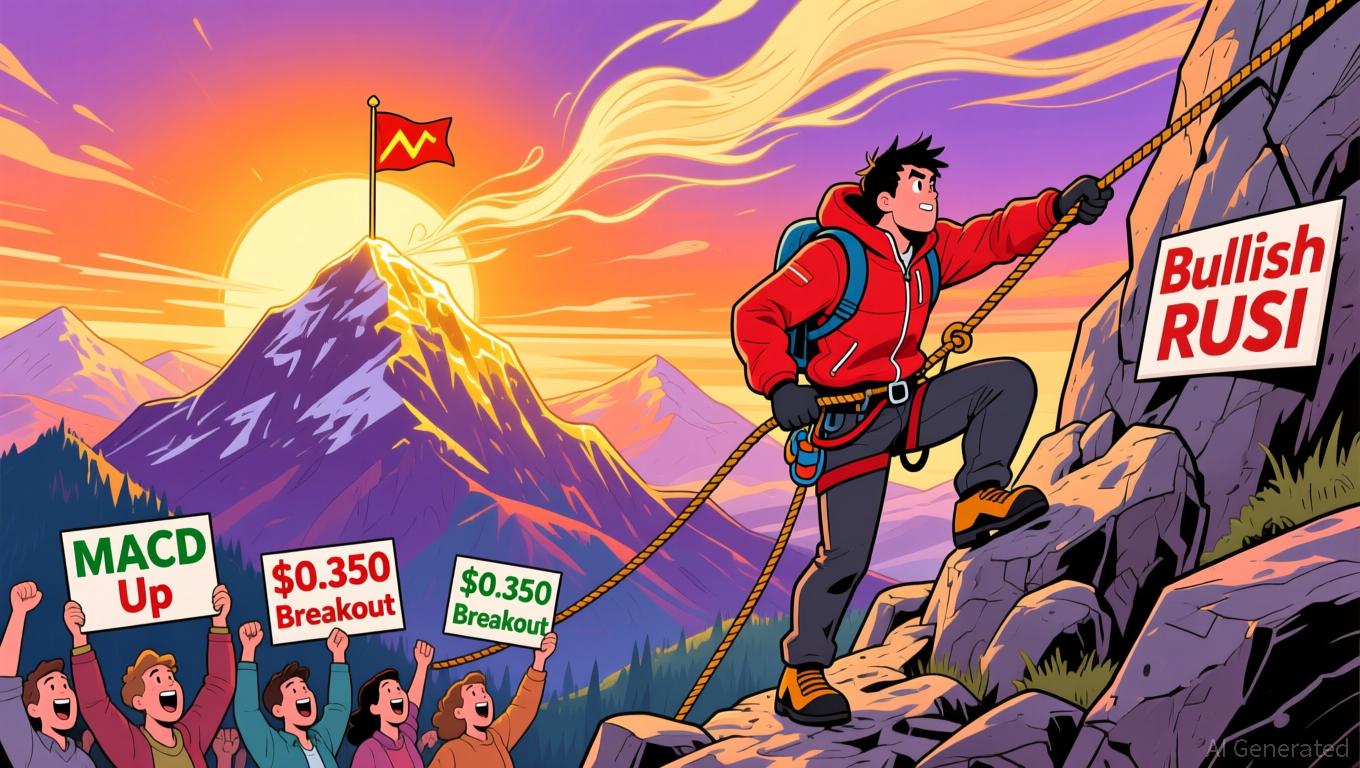Starknet Faces a Pivotal Moment: Will the Rally Continue or Will the Downtrend Resume?
- Starknet (STRK) broke a 623-day resistance, signaling a potential bullish reversal with RSI/MACD support. - Traders eye $0.350 as a key target, with a successful breakout confirming an upward trend or triggering bearish pressure. - Analysts highlight risks, noting a breakdown below $0.11 could reignite the downtrend toward $0.065.
Starknet (STRK) has captured the attention of investors after its price climbed above a significant descending wedge formation, fueling discussions about a possible bullish turnaround. The token, which had been trading within the $0.10 to $0.17 range for several months, recently surpassed a resistance trend line that had held for 623 days. Analysts interpret this breakout as a potential indicator of a new upward phase. Technical signals, such as bullish divergences in both the Relative Strength Index (RSI) and the Moving Average Convergence Divergence (MACD), have added to traders’ growing confidence

This breakout has placed
Experts have noted similarities to a typical five-wave decline that STRK completed since February 2024. Recent price developments point to either an A-B-C corrective move or the start of a fresh five-wave advance. In both cases, the $0.350 mark remains a key objective. Short-term traders are also watching the behavior of the fourth wave, with some projections suggesting a possible fifth-wave surge to the same resistance if STRK maintains crucial support levels
With STRK currently trading near $0.138, some analysts are targeting a short-term rise to $0.205, representing a 50% increase. Achieving this depends on the token staying above its 200-day exponential moving average (EMA) and maintaining strong trading volumes that signal active buying
However, caution is still warranted. The price structure remains delicate, and several analysts stress the importance of waiting for confirmation before entering long trades. For example, a drop below $0.11 could restart the downward trend toward $0.065, highlighting why traders should employ strict stop-loss measures
Disclaimer: The content of this article solely reflects the author's opinion and does not represent the platform in any capacity. This article is not intended to serve as a reference for making investment decisions.
You may also like
Ethereum Updates: Shodai Network Secures $2.5M in Seed Funding to Address Crypto’s Capital Challenges
- Shodai Network raised $2.5M in seed funding led by ConsenSys to address crypto's "toxic capital" misalignment issues. - The platform aims to align incentives between developers and investors through open-source tools and community-driven structures. - Backed by Ethereum co-founder Joseph Lubin, Shodai faces regulatory risks but gains credibility through ConsenSys' technical expertise. - This initiative reflects growing institutional demand for sustainable crypto fundraising solutions amid intensified reg

Ark Invest Turns to Circle Amid Growing Regulatory Certainty in Stablecoin Industry
- Ark Invest boosts Circle stake by 353,300 shares, signaling confidence in stablecoin growth amid market volatility and regulatory clarity. - Circle reports $740M Q3 revenue (66% YoY) and $73.7B USDC circulation, but faces margin pressures and a $482M net loss despite strong cash flow. - Ark shifts focus from Tesla to Circle and Alibaba , selling $30. 3M in Tesla shares amid China sales concerns and AI-driven tech bets. - Regulatory progress like the U.S. GENIUS Act and Circle's strategic partnerships (e.
EigenZero’s Reward-Based Approach to Overcoming Cross-Chain Trust Issues
- EigenCloud and LayerZero launch EigenZero, a decentralized cross-chain validation network using economic incentives and cryptographic constraints. - The "optimistic verification" model slashes staked ZRO tokens for malicious activity, aligning validator interests with network security. - By combining LayerZero's interoperability with EigenCloud's staking infrastructure, EigenZero reduces reliance on centralized bridges while maintaining trustless validation. - The solution enables scalable, cost-effectiv
Japan Strengthens Cryptocurrency Regulations and Tests Stablecoins to Foster Innovation While Ensuring Investor Confidence
- Japan's FSA and JPX are strengthening crypto regulations to prevent risks from hoarding and insecure management, balancing innovation with investor protection. - The FSA's proposed pre-approval system for crypto providers aims to address vulnerabilities exposed by the $312M DMM Bitcoin hack linked to Tokyo firm Ginco. - JPX plans to restrict listed companies from accumulating digital assets, following global trends as Japan hosts 14 listed Bitcoin buyers—the most in Asia. - Parallel stablecoin pilots wit